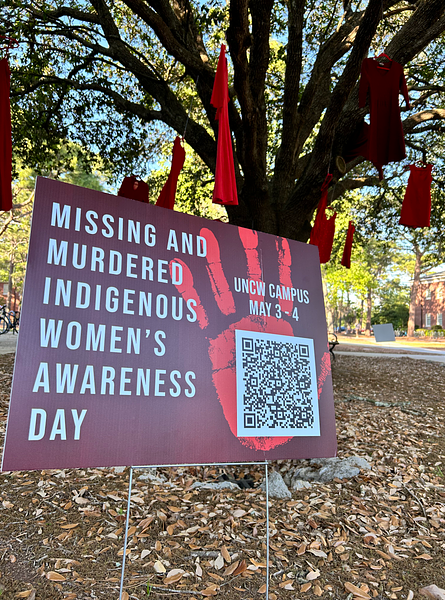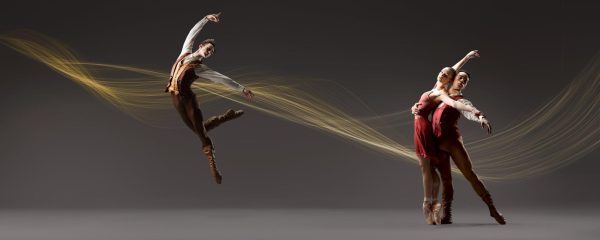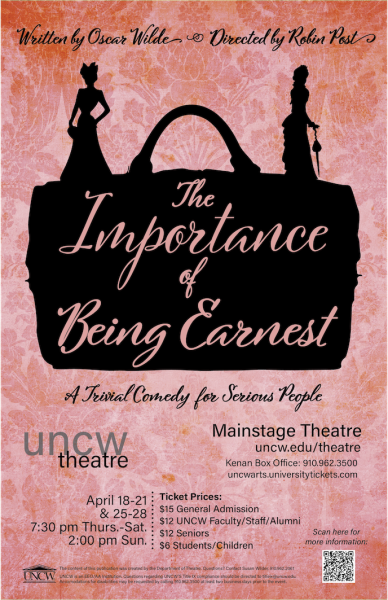UNCW Presents brings Lionel Popkin Dance to Kenan Auditorium
November 13, 2013
Lionel Popkin Dance’s week-long residency concluded with a performance on Saturday, Nov. 9 in UNCW’s Kenan Auditorium. The one-act piece, “Ruth Doesn’t Live Here Anymore,” was based on the life of modern dance pioneer Ruth St. Dennis.
A short biographical note in the program described Ruth as a “tremendous success.” Although she had “little formal training,” St. Dennis travelled the world. At one point in her career, she was even more famous than the legendary dancer Isadora Duncan.
Lionel Popkin, along with two female dancers, two musicians and an eclectic array of props, helped the audience appreciate the life of St. Dennis, whose international heyday spanned the early decades of the 20th century. All three dancers were talented, displaying lines only achieved after years of intense technical training.
However, the merit of the piece was based more on the novelty of its performance than the dancers’ mastery of each individual step. Popkin’s concept, while original and thought-provoking, could have benefitted from further refinement.
Perhaps Popkin intentionally meant to leave the edges of his piece rough, but he failed to mention this during his many monologues addressing the audience. Known as “breaking the fourth wall,” addressing the audience can make or break a performance piece. Although the lines of each monologue were both interesting and informative, regularly shattering theatergoers’ expectations is always risky.
The soliloquies could have been more effective if Popkin was more deliberate about the placement of each monologue. Rather than scattering them at inconsistently spaced intervals, he could have strategically placed the monologues to guide the audience’s reaction to St. Dennis’ controversial life and work.
Each time the audience had a chance to fall in love with a movement sequence, it seemed as if the narrator was back again to interrupt their collective reverie. If these interruptions were part of Popkin’s artistic vision, he could have simply explained the purpose of the monologues in a few words.
Even so, the performance was speckled with choreographic elements of genius. Popkin’s use of props, including everything from his mother’s saris to a leaf blower, was excellent. The leaf blower, used in at least two separate dance sequences, added an element of quirkiness and approachability to the evening.
Saris littered across the stage added a cultural perspective to the piece. St. Dennis’ controversial appropriation of Indian culture in her dance routines paired with Popkin’s Indian descent created a multi-layered network of social commentary. That the saris were blown around the stage by a leaf blower certainly left room for further thought on the effects of imperialism.
The lifts, too, were transcendent. Popkin assumed the modern dance position called “flatback” while one of the female dancers stood on his back. Popkin’s back achieved an almost inhuman degree of straightness, creating one of the piece’s most memorable silhouettes.
Popkin’s creativity also allowed him to use the dancers’ costuming as an integral element of the choreography. One particularly clever segment left the audience in a fit of giggles as two dancers dragged each other across the stage by their shirts. This pas de deux, or dance for two, was playfully tongue-in-cheek.
Another memorable segment featured intriguing choreography akin to shadow puppetry. All three dancers wore jewel-tone satin gloves and danced in front of stage lights, casting intricate, towering shadows. The dancers’ intricate finger movements successfully married the performance’s Indian influences with the consistent strains of humor.
Audience members left the theater with a richer understanding of Ruth St. Dennis. Whether they lauded her controversial actions or wanted to “finger-wag” at her antics, as Popkin termed it, the evening was undeniably entertaining.





















